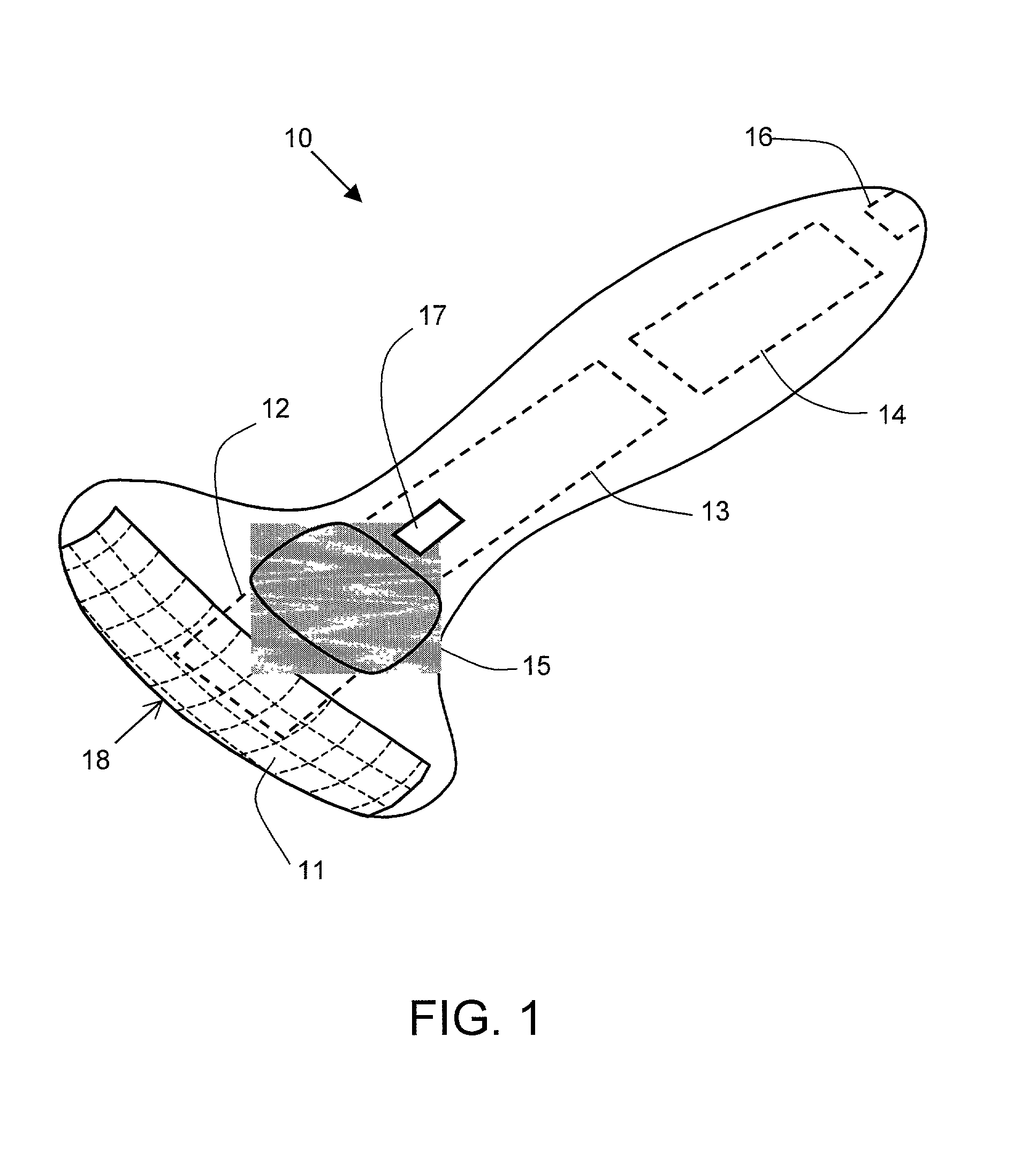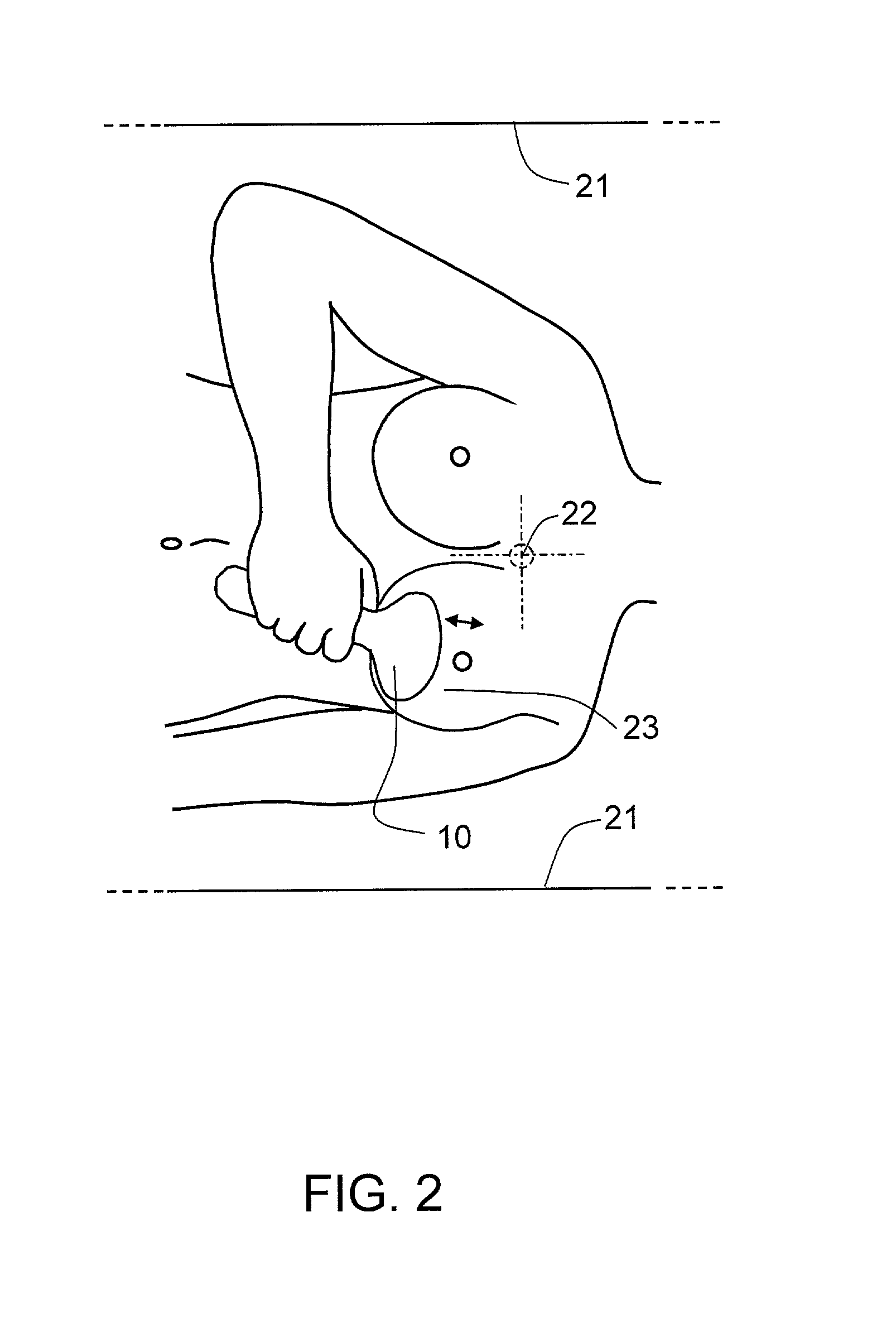Self-palpation device for examination of breast with 3-D positioning system
a positioning system and self-palpation technology, applied in the field of breast self-palpation, can solve the problems of patient discomfort, high device price, and large equipment size and weight, and achieve the effects of reducing patient discomfort, reducing patient comfort, and reducing patient comfor
- Summary
- Abstract
- Description
- Claims
- Application Information
AI Technical Summary
Problems solved by technology
Method used
Image
Examples
Embodiment Construction
[0028] Reference will now be made in greater detail to preferred embodiments of the invention, examples of which are illustrated in the accompanying drawings. Wherever possible, the same reference numerals will be used throughout the drawings and the description to refer to the same or like parts.
[0029] FIG. 1 shows hand held self-palpation device 10 for mechanical imaging of the breast in accordance with the present invention. Device 10 comprises a two-dimensional pressure sensor array 11, a self-contained motion tracking system 12, electronic unit 13, power supply 14, display 15, computer connector 16, and control wheel 17. Pressure sensor array 11 generates signals in response to pressure imposed on a pressure-sensing surface as it is pressed against and moved over the breast. Motion tracking system 12 generates signals in response to motion of device 10.
[0030] During breast self-examination the patient can lie in a bed 21 or another suitable surface, as shown in FIG. 2. Such exa...
PUM
 Login to View More
Login to View More Abstract
Description
Claims
Application Information
 Login to View More
Login to View More - R&D
- Intellectual Property
- Life Sciences
- Materials
- Tech Scout
- Unparalleled Data Quality
- Higher Quality Content
- 60% Fewer Hallucinations
Browse by: Latest US Patents, China's latest patents, Technical Efficacy Thesaurus, Application Domain, Technology Topic, Popular Technical Reports.
© 2025 PatSnap. All rights reserved.Legal|Privacy policy|Modern Slavery Act Transparency Statement|Sitemap|About US| Contact US: help@patsnap.com



